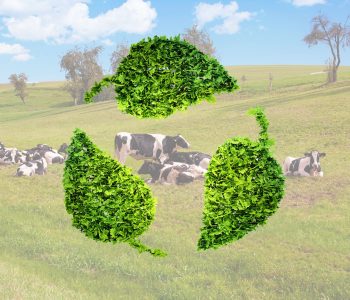Resource-efficient developments have become a necessity in the context of animal nutrition, and the production of animal derived products. While animal-source foods constitute a vital part of the global food supply and serve as crucial protein sources, their production significantly strains agricultural land and water resources. Understanding the direct and indirect competition between livestock production and food crop cultivation on a global scale is imperative.
A study employing an agro-hydrological model, coupled with crop-specific yield data, has revealed promising insights into reducing this strain. By substituting 11–16% of energy-rich feed crops, such as cereals and cassava, with agricultural by-products, substantial savings in land and water resources can be achieved. This strategy could spare approximately 15.4–27.8 million hectares of land, along with significant volumes of blue and green water resources, fostering sustainability in agricultural practices.
Agricultural by-products, including cereal bran, sugar beet pulp, molasses, distillery residues, and citrus pulp, offer promising alternatives to traditional feed crops. Camilla Govoni, a researcher at Politecnico de Milano, emphasizes that integrating these by-products into animal diets not only reduces resource competition but also enhances food security by redirecting saved resources towards the production of plant-based foods, thus promoting healthier and more sustainable dietary choices.
Furthermore, this shift towards alternative ingredients in animal diets not only enhances local sustainability but also yields benefits on a broader scale. Decreased demand for feed imports leads to economic and socio-environmental advantages, notably by alleviating pressure on water resources, curbing deforestation, and mitigating greenhouse gas emissions.
Addressing challenges such as the ongoing Ukraine/Russia conflict, the residual impacts of the Covid-19 pandemic, and climate change-induced extreme weather conditions, emphasizes the urgency for innovative approaches in feed production and animal nutrition.
Luciano Pinotti, a professor of nutrition and food at the University of Milan, advocates for the development of “smart animal nutrition” to optimize resource utilization without exacerbating environmental footprints. This necessitates exploring alternative feeds that align with circular economy principles and complement human nutrition, thereby fostering synergies within the food chain.
In conclusion, the integration of agricultural by-products into animal diets represents a promising avenue towards sustainability in livestock production. By fostering innovation in animal nutrition and resource allocation, we can mitigate resource competition, enhance food security, and promote environmental sustainability in the global food system.
Source: Govoni, C., D’Odorico, P., Pinotti, L. et al. “Preserving global land and water resources through the replacement of livestock feed crops with agricultural by-products. Nat Food 4, 1047–1057 (2023).”
